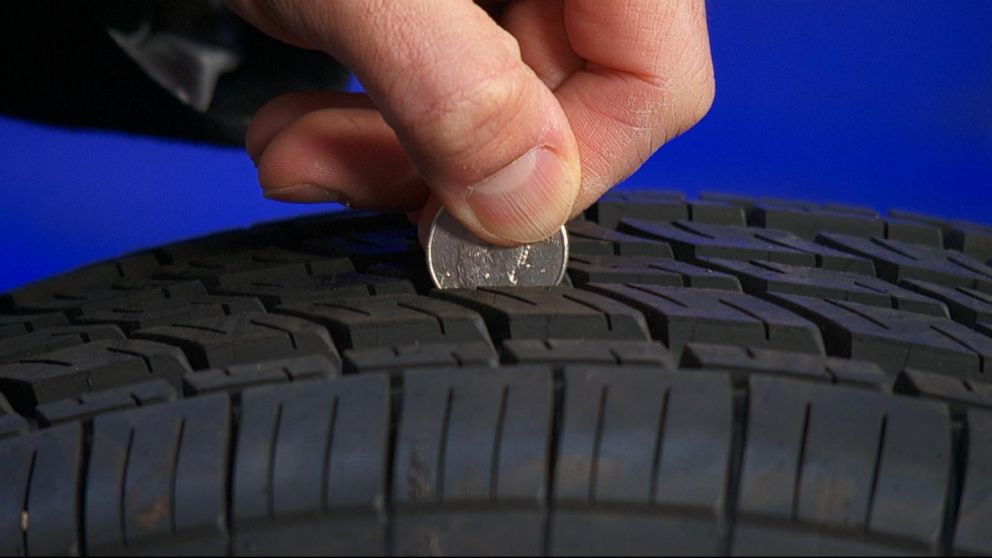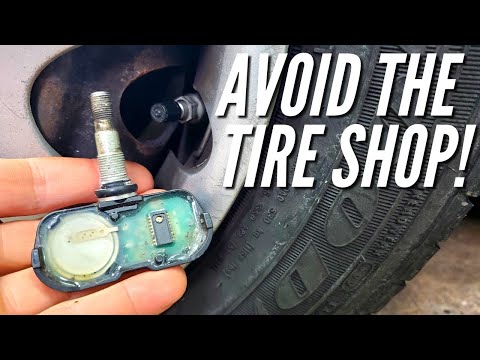We believe everyone should be able to make financial decisions with confidence. And while our site doesn’t feature every company or financial product available on the market, we’re proud that the guidance we offer, the information we provide and the tools we create are objective, independent, straightforward — and free.
So how do we make money? Our partners compensate us. This may influence which products we review and write about (and where those products appear on the site), but it in no way affects our recommendations or advice, which are grounded in thousands of hours of research. Our partners cannot pay us to guarantee favorable reviews of their products or services. Here is a list of our partners.
When the tread depth gets too low or your tires hit the six-year mark, it's time for new rubber.
Many or all of the products featured here are from our partners who compensate us. This may influence which products we write about and where and how the product appears on a page. However, this does not influence our evaluations. Our opinions are our own. Here is a list of our partners and here's how we make money.
While the consensus across the auto industry is that you should consider replacing your tires at least every six years, there’s no magic number for how often you should replace them.
Tires become unsafe when tread becomes too thin, rubber is degraded by time and temperature or their sidewalls are damaged. A flat is an inconvenience, but a blowout or sketchy grip can lead to an accident.
Although tires can be a substantial expense for a car owner to handle at one time, wear and tear — and their replacement — is mostly predictable. Here’s a rundown of how to determine if your tires need to be replaced and common signs that your tires aren’t up to par.
Tires have grooves known as tread that help them grip the road.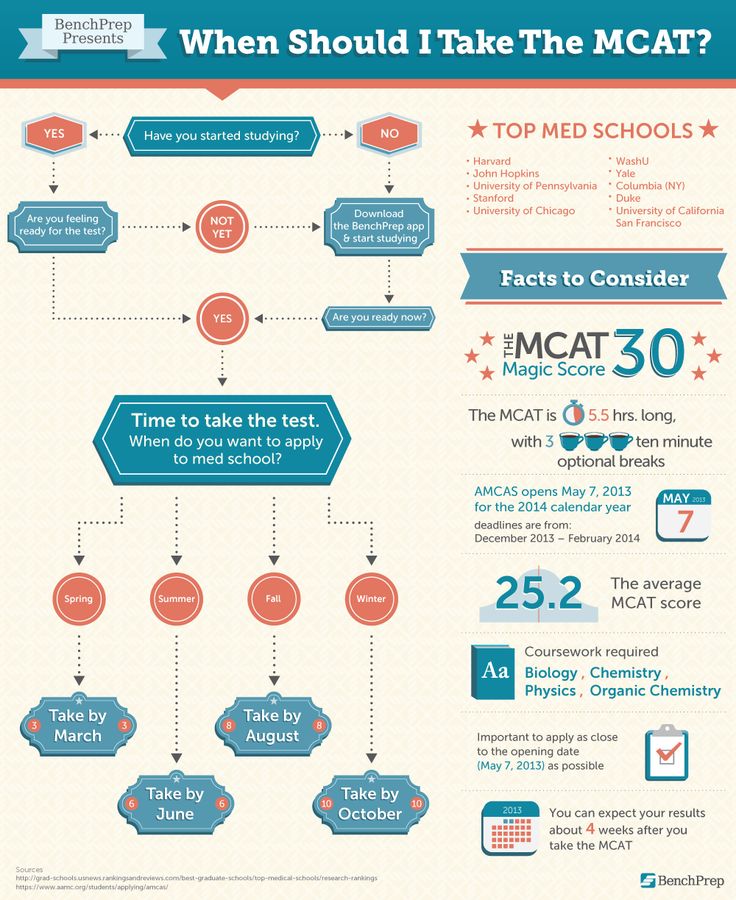 While most new tires have a tread depth around 10/32nds of an inch, the tread wears down over time. This makes it more difficult to steer your vehicle, reduces traction and increases braking time.
While most new tires have a tread depth around 10/32nds of an inch, the tread wears down over time. This makes it more difficult to steer your vehicle, reduces traction and increases braking time.
The U.S. Department of Transportation deems tires that have tread at or below 2/32nds of an inch to be unsafe. While your tire technically has enough tread to drive at this point, it can be dangerous to drive your car in certain conditions or for long distances.
There are three ways to figure out your tires’ tread depth:
Tread wear indicators are built into tires and are raised, evenly spaced sections in the grooves of your tire tread. On new tires, they are not as high as the tread. However, when the tread reaches the same level as the indicators, it means it’s time to replace the tires.
Tire tread gauges are relatively cheap tools that let you measure your tread in thirty-seconds of an inch. This will show you the exact measurement of your tire tread.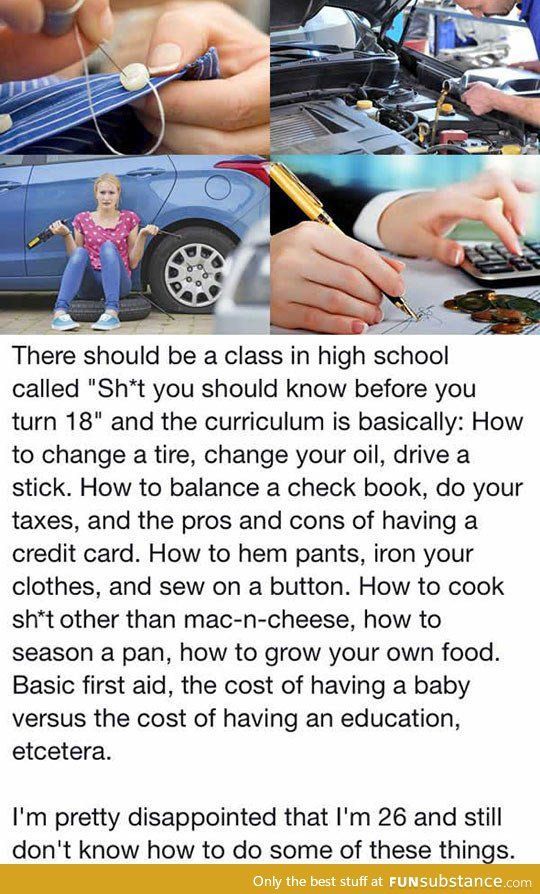
The penny test lets you estimate tread depth based on where the tread hits a penny. To do this test, take a penny, turn it upside-down, and insert it straight down in the groove of a tire’s tread. Look straight on at the penny to determine where the tread hits President Lincoln’s profile. If you can see his entire head, you’ve hit the mark and need new tires.
Regardless of how many miles they’ve driven, tires degrade over time and become more prone to failure. Factors like environmental conditions, storage and maintenance can influence how long a tire will last even if it’s only driven a few hundred miles a month.
While there’s no set requirement for when to replace tires according to age, the general recommendation is to replace them six years after the manufacture date and to never drive on tires that are older than 10 years.
Of course there are other times when your tires are telling you it’s time for replacement despite what your tread measurement might say.
You moved to a new climate. Some tires are designed for specific conditions such as extreme temperatures. Winter tires, for example, have deeper tread and are meant to be more flexible in cold weather; driving them on warm pavement can wear them down more quickly. If you move to a new climate, pay attention to road conditions and weather patterns to determine if you need different tires.
You’re losing traction. If it feels like your car is slipping or sliding during wet weather, this could be a sign of low tire tread that is failing to channel water away effectively. Because tire tread can wear unevenly, you might not notice that some of your tread has worn thin and is affecting your traction.
Most modern cars activate a warning light when your car loses traction. If you are seeing this warning light more frequently as time goes on, check the condition of your tires.
Your tires aren’t holding pressure like they should. Certain types of tire damage, including debris between the rim and the tire and damage to the sidewall, can cause continuous pressure loss.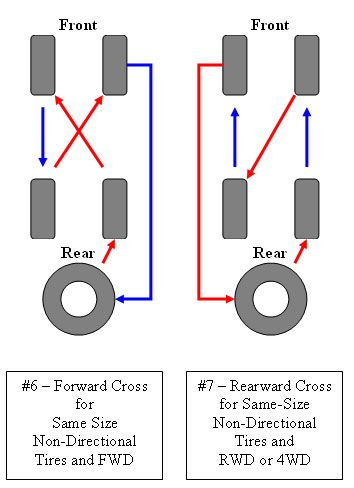 Some damage might be repairable, but some situations will call for new tires.
Some damage might be repairable, but some situations will call for new tires.
🤓Nerdy Tip
An average of 2% air loss in tires is common for every drop of 10 degrees in outside temperature. So don’t worry if your tire pressure varies a bit when it starts to get colder outside.
About the author: Whitney Vandiver is a writer at NerdWallet currently focusing on small business. Read more
On a similar note...
Get more smart money moves – straight to your inbox
Sign up and we’ll send you Nerdy articles about the money topics that matter most to you along with other ways to help you get more from your money.
Maybe you got a used car a few years ago or maybe you recently purchased a new car. No matter the situation, as a car-owner you may be wondering, how often should you replace your tires? When you should replace your tires differs slightly from vehicle to vehicle and driver to driver.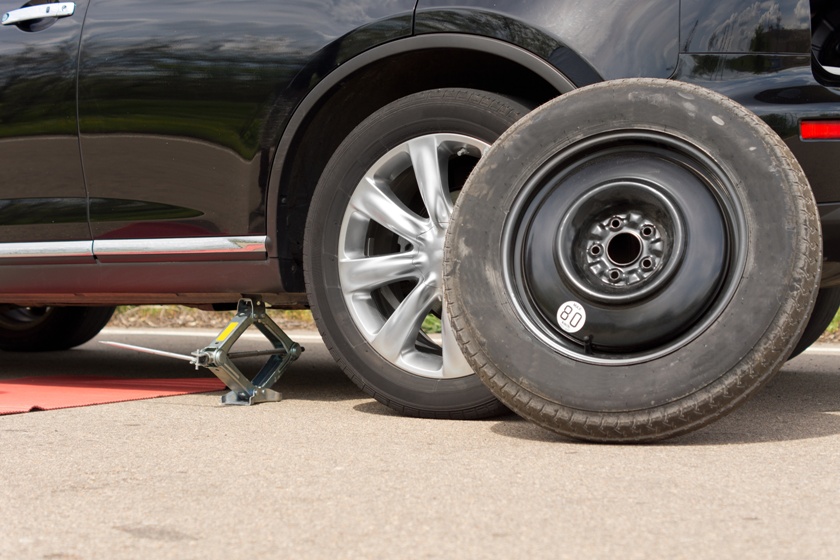 However, there are a few standards that should help you determine when to change your tires next.
However, there are a few standards that should help you determine when to change your tires next.
When and how often you should change your tires depends on a few factors. When thinking about replacing your tires, ask yourself these questions:
Along with the answers from above, there are a few pieces of information you can grab from your vehicle to help determine the next time you should replace your tires. The following should only take a few minutes to find out.
Most car experts will tell you to change your tires every 6 years or so. If you are constantly driving, you may need to change your tires earlier. Likewise, if you don’t drive often you can get away with a few extra years.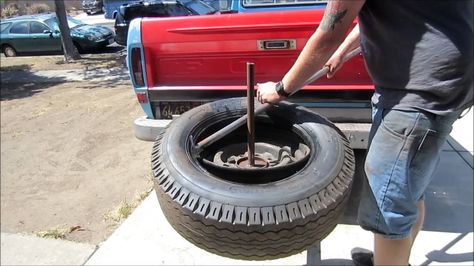
For a car that you bought new, you can easily bet on changing your tires 6 years after your purchase. For used cars, you’ll likely need to look at the date printed on the tire.
To see when your tires were manufactured, look for a four-digit number sequence on the outside of the tire. This will tell you the week of the year in which they were made. For example, 1112 means that the tires were made in the 11th week of 2012.
Another good rule of thumb when it comes to tire replacement is to replace your tires every 25,000-50,000 miles. In most cars, you can check your total mileage on the dashboard.
Aside from time and mileage, you can always check if your tires look like they need to be replaced. To do so, get a quarter and insert it headfirst into the center of the tire tread. If Washington’s head is even with the tread, your tires are safe, but you need to get them replaced soon.
Doing the same trick with a penny, if Lincoln’s head is even with the tread, hopefully, you have some money saved up because you need to change your tires ASAP.
Another physical test to see if it’s time for a tire replacement is to be mindful of how your car feels when you are driving. Does the steering wheel feel smooth when driving, or does it vibrate or veer to one side over the other. If it does any of the latter, consider getting your tires changed.
While there are steps you can take to expand the lifespan of your tires, when they are worn out, you need to replace them. You can’t put off changing your tires, as it is a safety risk to you and other vehicles on the road. Old tires can affect the way your car breaks and stops, which can lead to accidents. Be a responsible car owner and replace your tires when needed.
All car owners need to be on top of replacing their tires. How often should you replace your tires? It might vary from person to person, but there are standards in place to determine tire health. Is your car due for a tire replacement? Then check out Christian’s Tire Shop. We have all the name brands you could possibly want, right here in Albuquerque.
Is your car due for a tire replacement? Then check out Christian’s Tire Shop. We have all the name brands you could possibly want, right here in Albuquerque.
Consumer disputes over the age of tires have not subsided for several seasons. Buyers are excited that the warranty period for tires is limited to 5-6 years according to GOST, and after the expiration of this period, the rubber becomes unusable.
Is this really the case, read this article.
Manufacturers of most brands on their products set Shelf life is 5 years and service life is also 5 years .
The shelf life of a tire is the period during which it retains its performance when properly stored.
The end of this period does not mean that the tires have become unusable . A shelf life of 5 years is given by manufacturers because, by law, they cannot set a shelf life higher than the service life. Tires over 5 years of storage cannot be called damaged or defective, their technical characteristics may be slightly reduced. American researchers argue that the period of storage of "shoes" must be at least 10 years. Experts from Germany are sure that it cannot exceed 6 years.
Tires over 5 years of storage cannot be called damaged or defective, their technical characteristics may be slightly reduced. American researchers argue that the period of storage of "shoes" must be at least 10 years. Experts from Germany are sure that it cannot exceed 6 years.
The expiration date of tires is the warranty period during which the manufacturer is responsible for the quality and condition of the tire if it was used for its intended purpose without violating the operating rules.
According to Russian legislation (GOST 5513, GOST 4754-97) , the service life of tires is 5 years from the date of manufacture.
How can I find out the date of manufacture of tires?
You can find out the age of tires by a special DOT code. Tires manufactured after 2000 in the DOT code contain two pairs of numbers, where the first pair indicates the week number of the year, and the second pair indicates the year.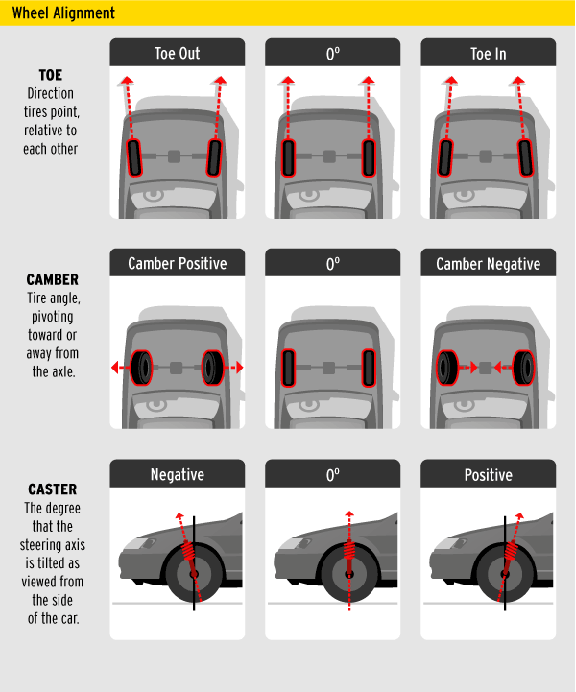 Earlier tires before 2000 have 3 numbers in their composition, where the first two digits are the week number, and the last one is the year (see the transcript in the photo).
Earlier tires before 2000 have 3 numbers in their composition, where the first two digits are the week number, and the last one is the year (see the transcript in the photo).
Determination of the average shelf life of a tire according to GOST and operating conditions.
- The symbol ZR denotes tires for high-speed cars. They are recommended to be used at speeds over 240 km/h. up to 6 years
- Tires with the H symbol are used at a maximum speed of 210 km/h. within 5 years.
- The sign S symbolizes the maximum permissible speed of 180 km/h. and operational period of 4-5 years.
Most tire manufacturers do not agree that tire life is limited to 5 years. Each company has its own opinion on this matter. We analyzed several of them and the information they posted on their official websites.
Michelin
The French tire manufacturer Michelin has become famous for its active struggle against the perception of the rapid aging of tires as a perishable product. Her information campaign "Tires Are Not Bananas" created a lot of noise in the automotive environment. According to the office, there have been several test runs in Saudi Arabia, South Korea and Germany. As a result of testing, no difference was found between new tires and tires stored for 3 years. They were tested for various characteristics such as rolling resistance, high speed durability, etc. Tires with a one-year life were approximately equal in performance to 10-year unused tyres.
Her information campaign "Tires Are Not Bananas" created a lot of noise in the automotive environment. According to the office, there have been several test runs in Saudi Arabia, South Korea and Germany. As a result of testing, no difference was found between new tires and tires stored for 3 years. They were tested for various characteristics such as rolling resistance, high speed durability, etc. Tires with a one-year life were approximately equal in performance to 10-year unused tyres.
Michelin focuses the attention of car owners on the fact that tires are not a perishable product, their shelf life is not as important as the service life is important, starting from the date the tires are installed on the rims. It is from this moment that the tire is subjected to all tests: pressure, temperature changes, wear, contact with uneven and sharp coatings, etc.
Continental
On the Russian official website of Continental, we found the following information on the expiration dates of tires.
“When a tire is stored in the correct position and under the recommended conditions, it will not lose its original balanced performance for 5 years from the date of manufacture of the tire.
A properly maintained, unused tire less than 5 years old can be sold as a new tire and used normally.
Continental recommends replacing all tires (including spares) with a sidewall date greater than 10 years.
Nokian
The following information is posted on the Nokian official website:
“Tire life is not defined by law, but tires can only be considered “new” if they have been manufactured within the last five years. The recommended service life of tires is six years, and the recommended maximum period is 10 years.
The opinion of our specialists, based on many years of experience, coincides with the opinion of manufacturers: the shelf life is 5 years + the service life is up to 10 years. Moreover, more "adult" tires, in our opinion, are of better quality.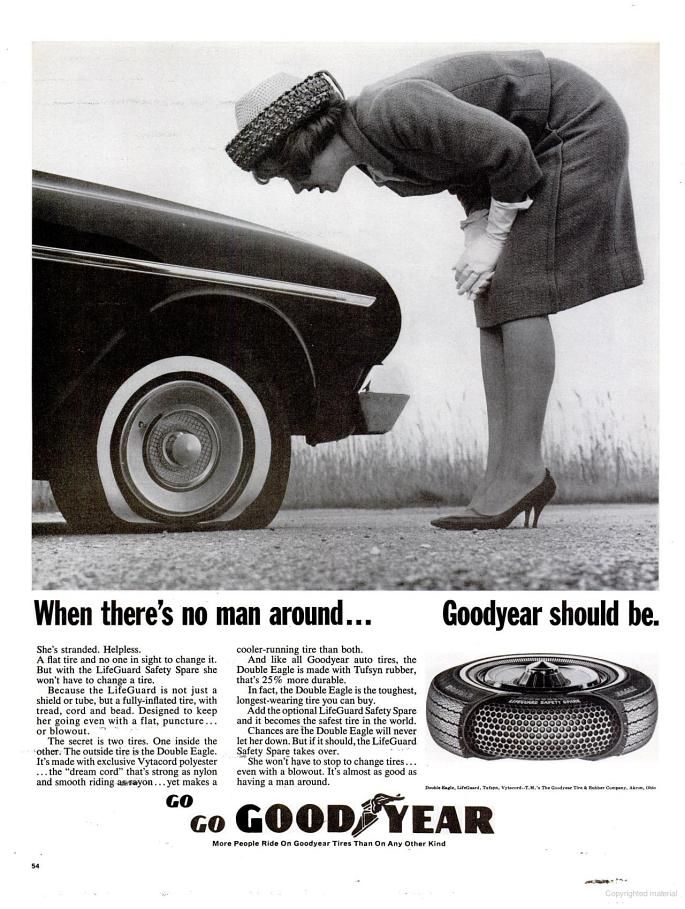
To keep tires as long as possible, they are stored in compliance with all rules and recommendations. The main condition is a cool, ventilated, darkened room away from oils, paints, ozone, and heat sources.
Rubber products tend to lose their performance over the years. To prevent and slow down this process, manufacturers add polymers to the rubber compound. They prevent oxidative processes that occur due to the interaction of protectors with oxygen and ozone.
The following are the main conditions for the proper storage of tires in accordance with GOST 24779-81:
Maintaining a constant regime without sudden jumps, slight temperature fluctuations from -30°С to +35°С are allowed;
Provide a low humidity level of 50-80% in a dry, ventilated cool room;
Avoid direct sunlight, use darkened hangars, shield heat sources;
Keep away from sources of heat;
Tires should not come into contact with corrosive, copper materials.
Avoid kinking, loading or positioning on an uneven surface.
Avoid contact with oils, organic solvents, acids, alkalis, fuels and lubricants on the tire surface. It is forbidden to lay tires on a wet and dirty surface.
In the warm season, when storing tires outside, they should be covered with light-tight material and raised above ground level to ensure ventilation and prevent the occurrence of the greenhouse effect.
Storage on reflective, light and heat absorbing surfaces is prohibited.
Keep away from chemicals, oils, paints, open flames, electric motors that produce ozone.
Used tires must be washed and dried.
Tires without rims should be stored upright.
The service life depends on many factors: the load on the car, the quality of the roads, the driving style, the distance traveled, tire damage, etc.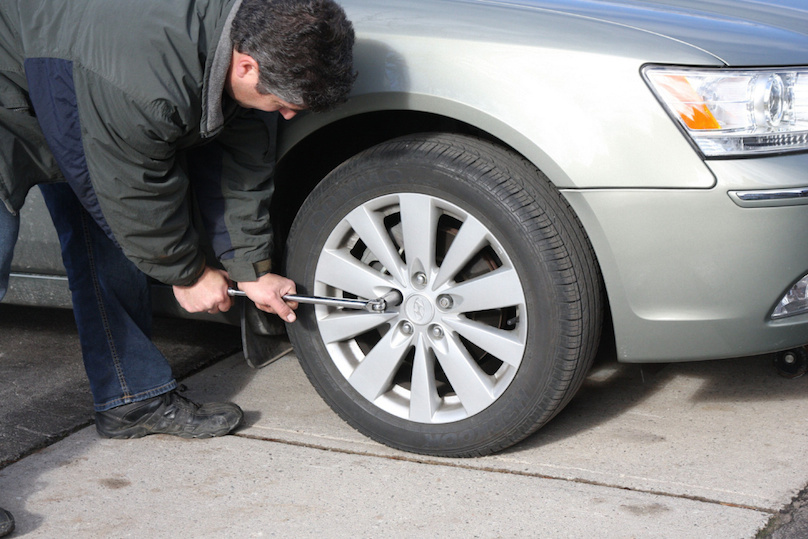 To increase their service life, follow these rules:
To increase their service life, follow these rules:
Check tire pressure every 2-3 weeks. With reduced pressure, tire wear increases by the equivalent of a % reduction. For example, a 15% reduction in pressure can result in a 15% reduction in service life. Inflated tires are less scary.
The wear of the front tires is always significantly higher than the rear ones, so it is recommended to swap them after some time, carefully monitoring the direction of the tread pattern and the direction of rotation.
Proper alignment of tires in relation to rims. If the direction is not the same, then performance is significantly reduced.
To prevent damage to the sidewalls of tires, avoid close proximity to curbs and high ledges.
Wash off dirt from the surface of the rubber and from deep grooves with special cleaning agents.
Adhere to an even driving style without harsh brakes and quick starts.
Do not overload the car beyond the norm. 20% excess weight leads to a 30% loss of tire life.
Keep the wheels balanced and check the alignment angles annually.
The main condition for a long tire life is:
- high quality products,
- careful operation,
- proper storage of tires in the off-season,
- timely diagnosis.
The age of tires in standard storage is a minor non-determining factor that should not be taken into account when buying them.
Previous article Next article
A car tire is a rubber elastic shell that is mounted on a disc rim. It is she who is in direct contact with the surface of the roadway and is directly designed to reduce small fluctuations on the roads, as well as to compensate for flaws in the trajectory of the wheels. During operation, it is subjected to heavy loads of a diverse nature, therefore it naturally has its own service life, which is influenced by a number of factors.
Shelf life - the period during which the company guarantees the possibility of using the product for its intended purpose and is fully responsible for defects that arose through its fault.
When buying tires, you need to look so that no more than three years have passed from the moment of production. The date of manufacture and any other information is very easy to find out, it is indicated on the tire label among the general information about dimensions, design, speed and load ratings.
Tire production date
Russian legislation establishes the service life of car tires under warranty in accordance with GOST 4754-97 and GOST 5513 - 5 years from the date of manufacture, but for tires, first of all, the main indicator is the quality of the product, and not the time of its use.
According to GOST, the average tire life should be calculated in the following order:
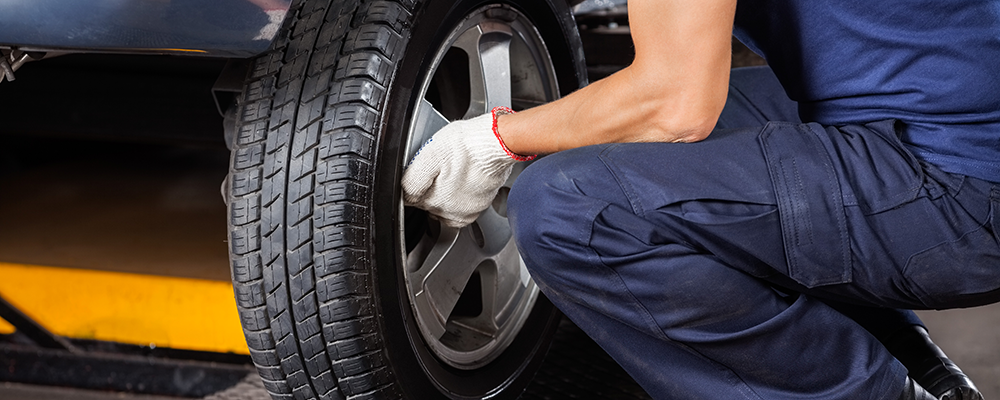 This is how high-speed options are designated, these products can be used at speeds over 240 kilometers per hour. The product must fully retain its properties for 6 years.
This is how high-speed options are designated, these products can be used at speeds over 240 kilometers per hour. The product must fully retain its properties for 6 years. Experts recommend replacing tires before they reach their expiration date. Some motorists believe that rubber is suitable if it is rarely used, and at the same time its age is already 5-6 years old, but this is an erroneous opinion! Indeed, due to the fact that defects appear in tires during operation and storage, they are associated with its oxidation and cracking - at a critical moment, it can let you down.
Shelf life is a certain period during which the product, subject to the established rules of storage and operation, must retain all its properties. If the shelf life has expired, this does not mean at all that the product is unsuitable for use, but its technical characteristics may decrease.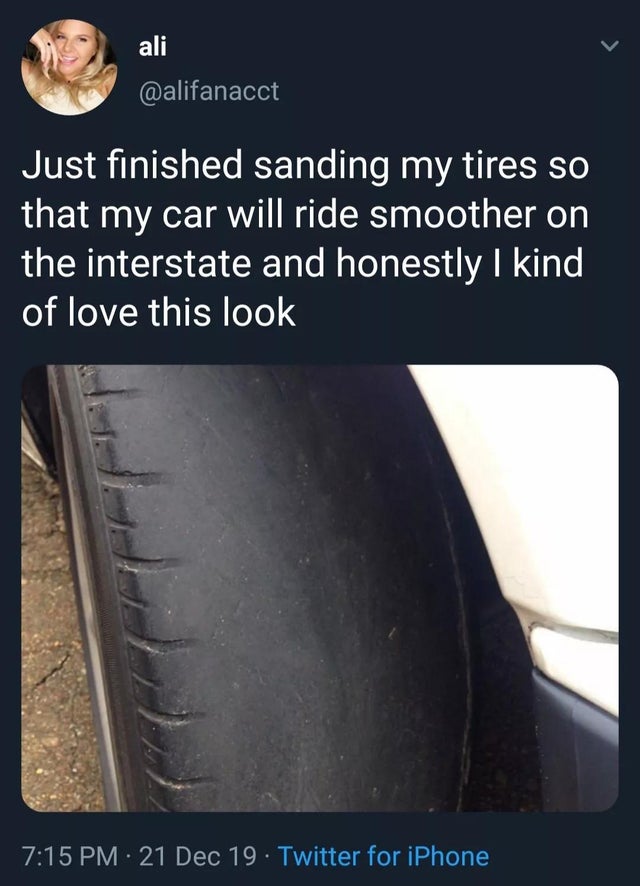
Tires can age through physical and chemical processes, this hypothesis applies to tires that are not used or little used. To prevent the aging process itself, special substances are added to the rubber compound that help counteract harmful chemical compounds with oxygen and ozone. Doing so will ensure that, when stored properly, the tire will meet the definition of a new tire.
It should be noted that the warranty shelf life is not the service life of . The storage period for five years is set, not because the tire will deteriorate after that, but because, according to the law, the manufacturer does not have the right to establish a shorter warranty period, which is protection for the end user.
In recent years, many American experts believe that the shelf life and operation of car tires should be limited to 10 years. In turn, German experts believe that the expiration date of tires should be limited to 6 years, this also applies to new tires.
Rules and regulations for the storage of pneumatic tires according to GOST 24779-81:
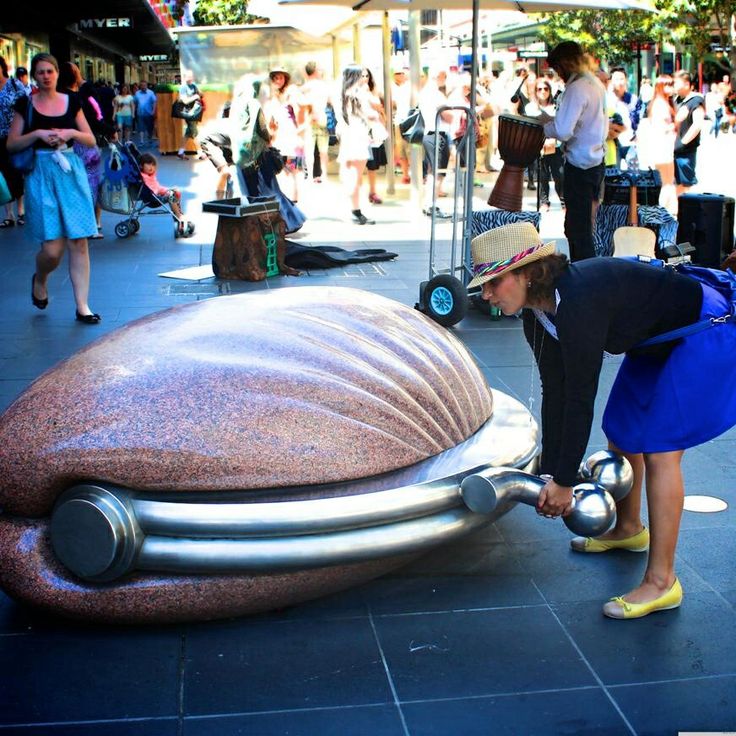
For a complete list of rules and recommendations for proper tire storage, see the article “How to store car tires”.
Well-known brands of imported tires, such as: Bridgestone, Michelin, Goodyear and Dunlop last up to 10 years or more from the date of manufacture, this period is generally accepted throughout the world. But the total shelf life and storage in the warehouse, from the date of issue, tires Continental is no more than 5 years.
But the total shelf life and storage in the warehouse, from the date of issue, tires Continental is no more than 5 years.
Although, as we have already figured out, the storage conditions of tires mean a lot, not only new ones, but also those that were removed from the car until the next season. For example, nokian tire expiration date ranges from 3-5 years, subject to verification at least 1 time per year, after 5 years of use.
Unfortunately, the legislation does not establish the permissible storage periods for tires in a warehouse, but experts believe that a tire that has lain there for about 5 years is still equal to a new one.
The tire life of a vehicle is the period of time during which the manufacturer gives a guarantee for tires and is fully responsible for any defects that will be detected during their operation. According to manufacturers, tires should last at least ten years, although in practice they have to be replaced approximately every 5-6 years, in some cases even less.
There are many different factors that affect the wear of car tires, the main ones are listed below:
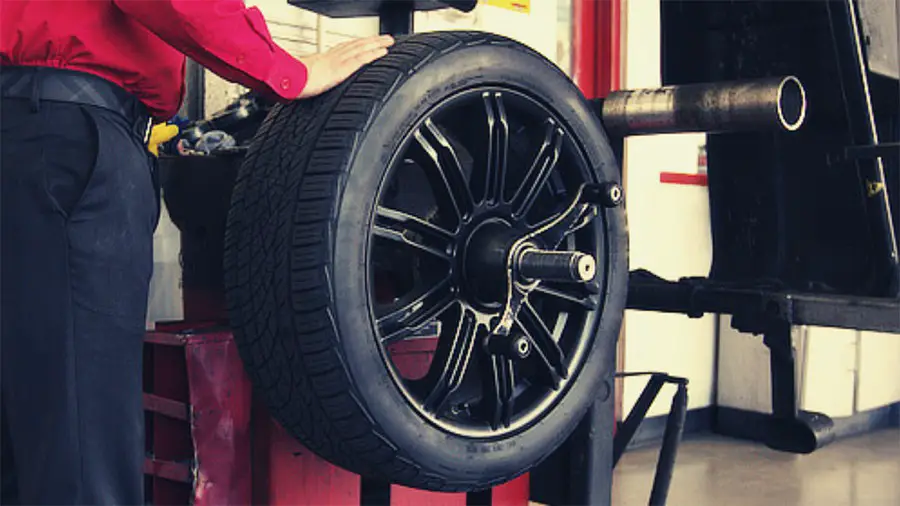
Next, let's take a closer look at the instructions for certain actions that need to be taken in case of wear on car tires.
When diagnosing tires, in addition to the fact that it is imperative to pay attention to the degree of wear, there are also other equally important factors indicating the end of the service life.
In order to determine when the life of car tires ends with a detailed inspection, you need to pay attention to the following points:
 Also, such “hernias” can appear on the inside of the wheel, so you need to be extremely careful and inspect in time.
Also, such “hernias” can appear on the inside of the wheel, so you need to be extremely careful and inspect in time. When any defects were noticed in the tires, it is recommended to carry out a replacement, and not a rescue restoration, in order to somehow extend the period of use.
To prolong the life of car tires, it is necessary to periodically diagnose them.
In order to make your tires last longer, you need to follow certain rules of use:
 If the pressure is increased, then the wear also increases, but 2 times less than in the reduced one.
If the pressure is increased, then the wear also increases, but 2 times less than in the reduced one. Since there is always more wear on the front (driving) wheels, then every 10-15 times. thousand or at the time of changing seasonal tires, it is advisable to change it in places.
Swapping front tires to rear tires
Scheme of swapping 5 car wheels
Please note that although there are tires with a directional and non-directional pattern, you still cannot change the direction of rotation of the wheel. And in the second option, the front wheels must be reboarded before being installed back.
It is necessary to check if the tires are installed correctly in relation to the rims, which is usually indicated on the sidewalls of the tires, this is important, since if the tires rotate in the opposite direction to the design, all their performance will be significantly reduced in all modes of operation of the car.
Non-directional tire replacement scheme
All-wheel drive tire replacement scheme
